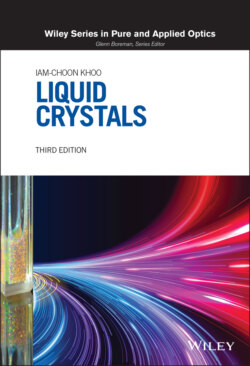Читать книгу Liquid Crystals - Iam-Choon Khoo - Страница 20
1.4. MIXTURES, POLYMER‐DISPERSED, AND DYE‐DOPED LIQUID CRYSTALS
ОглавлениеIn general, temperature ranges for the various mesophases of single constituent liquid crystals are quite limited. Therefore, while many fundamental studies are still conducted on such liquid crystalline materials, industrial applications employ mostly mixtures, composites, or specially doped liquid crystals with large operating temperature range and tailor‐made physical and optical properties.
Figure 1.14. A shuttlecock‐shaped liquid crystal formed by incorporating fullerene C60 into various liquid crystals was reported [11].
There are many techniques for modifying the physical properties of a liquid crystal. At the most fundamental level, various chemical groups such as bonds or atoms can be introduced to modify the LC molecule. A good example is the cyanobiphenyl homologous series nCB (n = 1,2,3…). As n is increased through synthesis, the viscosities, anisotropies, molecular sizes, and many other parameters are greatly modified. Some of these physical properties can also be modified by substitution. For example, the hydrogen in the 2, 3, and 4 positions of the phenyl ring may be substituted by some fluoro (F) or chloro (Cl) group [14].
Besides these molecular synthesis techniques, there are other ways to dramatically improve the performance characteristics of liquid crystals. In the following sections, we describe three well‐developed methods, focusing our discussion on nematic liquid crystals as they exemplify the unique characteristics of liquid crystals widely used in optical and photonic applications.
